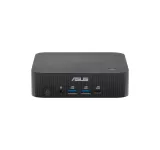Technology is reshaping the way we plan and experience our travels. Learn how to maximize life & time off as a digital nomad and how to make your work & travel dreams a reality.
How Technology Changes Company Thinking And Company Performance
This article is contributed by Varinderjit Singh, General Manager, Lenovo Malaysia While I think most of us would expect large organizations to include forward-thinking technology in their overall business strategies, we’re starting to see this with SMBs as well, including…
Adopting New (Virtual and Augmented) Realities for Manufacturing
Augmented & virtual reality is changing the game of the manufacturing industry. AR/VR allows efficiency, enhanced employee training & cost cuts. Contributor Varinderjit Singh from Lenovo Malaysia explains the use of AR/VR in manufacturing.
What Might the Next Decade Bring for Computing?
New technologies can take many forms. Often, they come from generally straightforward, incremental product advances over the course of years; think the Complementary Metal-Oxide-Semiconductor (CMOS) process shrinks that underpinned many of the advances in computing over the past decades. Not…
Thriving Forward: Embracing The Digital Lifeline of Restaurants for Continued Business Resilience And Growth
Delving into the food industry, understand how digitalisation is creating a necessity for survival and growth. See how foodpanda is navigating the adaptable landscape in Malaysia.
New Life: Replacement Doesn’t Have To Be The End
Varinderjit Singh, General Manager of Lenovo Malaysia, discusses the realities of electronic waste and introduces sustainable device repair.
Embracing the Golden Digital Era: Elevating Malaysia’s Potential with Cloud Adoption & Skilling
Azhar Abdullah shares his insights on the digital economy in Malaysia & how tech transformations can help businesses embrace technology.
Edge Computing Unbounded: A look at How New Organizations are Using Edge Computing as Competitive Differentiation
This article is contributed by Francis Chow, Vice President and General Manager, In-Vehicle Operating System and Edge, Red Hat Organizations across the globe are deploying new services, generating massive amounts of data at the edge. With this explosion of data,…
Careers in the P-Hailing Industry Deserves Respect – A Path to Growth and Upskilling Opportunities
Find out why foodpanda delivery riders find P-hailing as a viable source of supplementary wages. Read on to access fair wages and upskilling opportunities!
Where Next for Product Development In A Hybrid World?
Explore how businesses can use hybrid working to unlock innovation & unleash productivity in the digital transformation era.

















